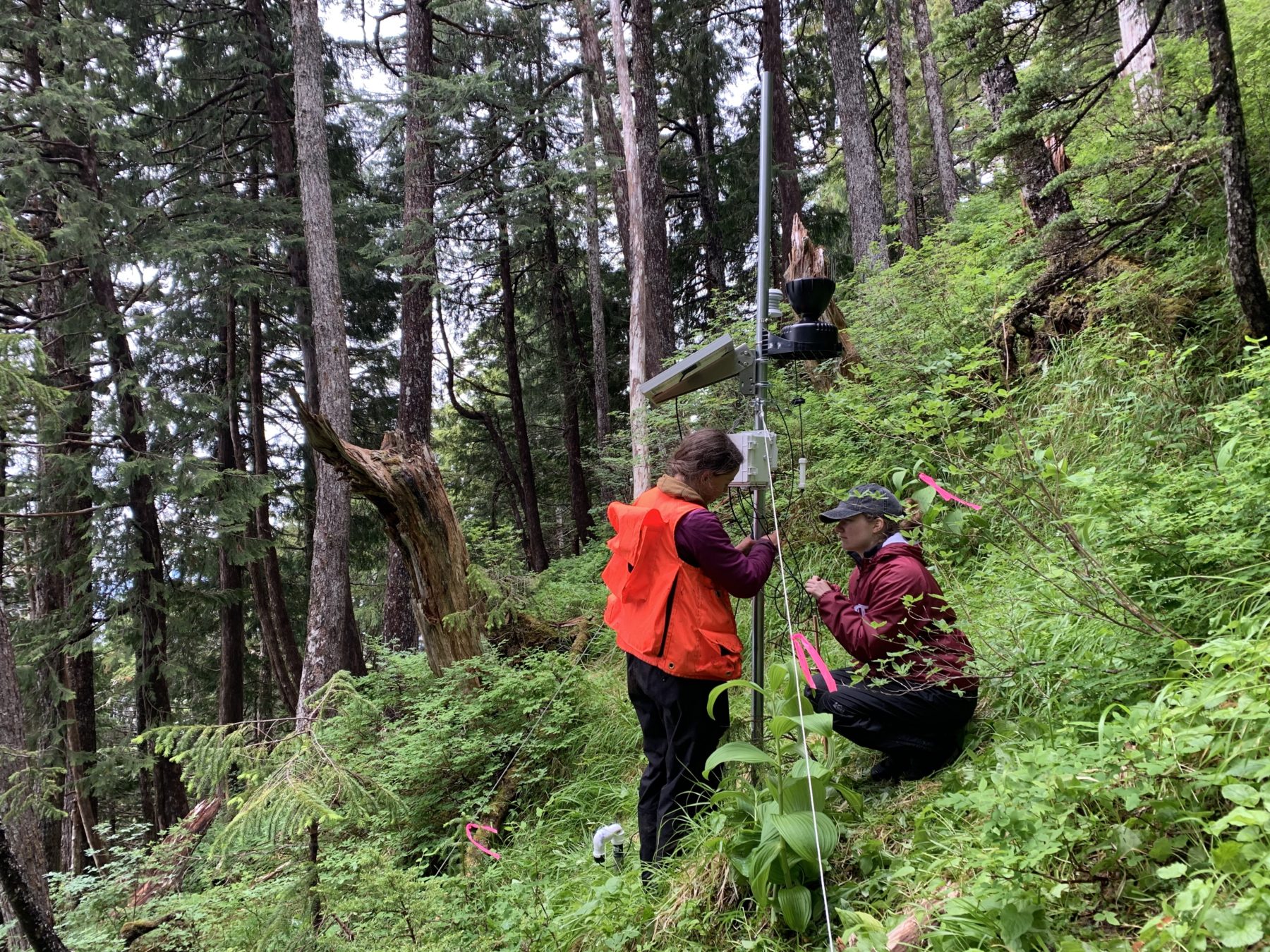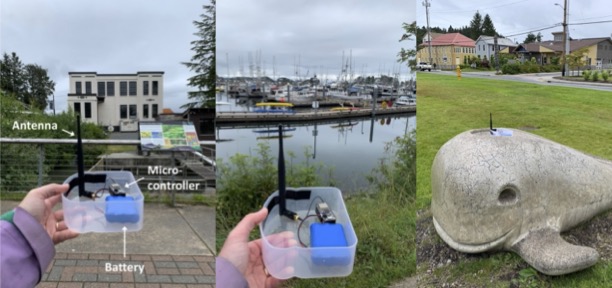
Landslide Research, News
Landslide Research, News
Landslide Research, News
Landslide Monitoring Update: Adventures of Nib, the Node that Tried
The Sitka Sound Science Center continues to host researchers working on a landslide research and monitoring program. For ten days this July, Dr. Annette Patton (postdoctoral landslide scientist at the University of Oregon) and Emily Pannell (undergraduate mechanical engineering student at Oregon State University) have been in Sitka debugging monitoring equipment that is currently in place (called SitkaNet) and installing new instrumentation (a commercial system manufactured by Onset Computer Corporation). As the new geoscience coordinator at the Sitka Sound Science Center, I offered support as a field assistant during their visit and will continue to maintain their equipment throughout the year.
While hillslope sensing stations that are part of the “SitkaNet” continue to record soil moisture and precipitation data, they haven’t been able to reliably send the data from monitoring nodes installed on hillslopes to hubs which get the information back to people in town. To investigate the trouble with communication, Emily and Annette built a tester system to pinpoint the problem. We named the tester node ‘Nib’ and the Adventures of Nib ensued. In order to test the range over which Nib is able to communicate with the hub, Nib took a stroll from the Science Center and through downtown Sitka.

While radio-transmitted troubleshooting continues, Annette has opted to install cellular-communicating instruments alongside the SitkaNet nodes. Each sensing station monitors soil moisture, precipitation, atmospheric temperature, and several other measurements. The new instrumentation differs in that it uses cell signal to send the real-time hillslope information, whereas the “SitkaNet” system uses radio signal. The cellular transmission puts some limitations on where the equipment can be installed but has shown to be reliable; SSSC employees installed the first station on Mt. Verstovia this past winter. Encouraged by the success of the first station, Annette and her team installed two more of these cellular monitoring stations last week. Now, Mount Verstovia, Gavan Hill, and Harbor Mountain are each outfitted with an “Onset” cellular-transmitting sensing station. Real-time data will continue to transmit throughout the rainy season. Project partners at the SSSC and other agencies are currently developing a publicly accessible website to share this information and landslide risk mitigation strategies with Sitka residents.


